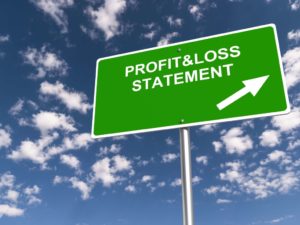Bookkeeping
What are Liabilities? Understanding, Types, Examples

If you’ve promised to pay someone a sum of money in the future and haven’t paid them yet, that’s a liability. Suppose a company receives tax preparation services from its external auditor, to whom it must pay $1 million within the next 60 days. The company’s accountants record a $1 million debit entry to the audit expense account and a $1 million credit entry to the other current liabilities account.

What are Different types of Liabilities?
They are current liabilities, long-term liabilities and contingent liabilities. Current and long-term liabilities are going to be the most common ones that you see in your business. Balance sheet presentations differ, but the concept remains the same. Some businesses prefer the account-form balance sheet, wherein assets are presented on the left side while liabilities and equity are presented on the right (see highlighted part). Liabilities also have implications for a company’s cash flow statement, as they may directly list of liabilities in accounting influence cash inflows and outflows. For example, a mortgage payable impacts both the financing and investing sections of the cash flow statement.
Type 5: Accrued expenses

The only difference is that current liabilities are not included in the equation. Mortgage payable is the liability of a property owner to pay a loan. Essentially, mortgage payable is long-term financing used to purchase property.
- Liabilities (and stockholders’ equity) are generally referred to as claims to a corporation’s assets.
- Long-term debt is also known as bonds payable and it’s usually the largest liability and at the top of the list.
- The money borrowed and the interest payable on the loan are liabilities.
- Along with the shareholders’ equity section, the liabilities section is one of the two main “funding” sources of companies.
- A person or business can also be held liable from a legal standpoint; therefore, liability insurance is frequently purchased as a form of financial protection.
Where Are Liabilities on a Balance Sheet?

When a company determines that it received an economic benefit that must be paid within a year, it must immediately record https://www.bookstime.com/ a credit entry for a current liability. Depending on the nature of the received benefit, the company’s accountants classify it as either an asset or expense, which will receive the debit entry. Although the current and quick ratios show how well a company converts its current assets to pay current liabilities, it’s critical to compare the ratios to companies within the same industry. The quick ratio is the same formula as the current ratio, except that it subtracts the value of total inventories beforehand.
The Impact of Liabilities on Financial Statements
As a small business owner, you’re going to incur different types of liabilities as you operate. It might be as simple as your electric bill, rent for your office or other types of business purchases. These can play a critical role in the long-term financing of your business and your long-term solvency.
- Therefore, the company issues bonds to help pay for the additional warehouse.
- This calculation involves comparing the total liabilities with the total assets.
- In case of sudden requirements, a liability helps entities pay for operations and then return the finance as applicable to the lenders.
- For a bank, accounting liabilities include a savings account, current account, fixed deposit, recurring deposit, and any other kinds of deposit made by the customer.
- Lease payments are a common type of other liability in accounting.
In conclusion, liabilities play a crucial role in business operations, as they represent the financial obligations a company https://www.instagram.com/bookstime_inc has to its employees, suppliers, lenders, and other stakeholders. Proper management of these liabilities is essential to ensure smooth business operations and long-term financial health. Proper understanding and management of liabilities in accounting are essential for a company’s financial stability and growth.
Prepaid expenses are payments made in advance for products or services such as insurance, electricity, cable tv, and internet. Liabilities refer to the company’s obligations to creditors or suppliers which they need to fulfill in the short-term or long-term. This includes money the company needs to repay or goods and services they need to supply or render respectively.
A company with too many liabilities compared to its assets may face cash flow problems or increased financial risk. Understanding a company’s liabilities can also help assess its ability to meet debt obligations and the potential for future growth. Lease payments are a common type of other liability in accounting. These are the periodic payments made by a lessee (the business) to a lessor (property owner) for the right to use an asset, such as property, plant or equipment. In accounting terms, leases can be classified as either operating leases or finance leases. An operating lease is recorded as a rental expense, while a finance lease is treated as a long-term liability and an asset on the balance sheet.
